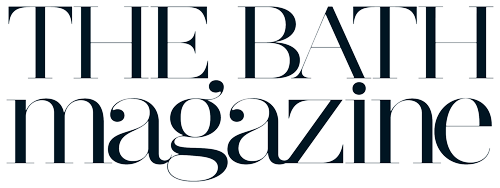“Anything can be a puppet”, says costume and puppetmaker Hannah Southfield. “But it won’t be convincing unless it has breath and a point of focus.” Emma Clegg learns about this theatrical art form and in the process encounters Asian elephants, flying horses and giant serpents.
Costume and puppet maker, event decorator, set builder, body painter and community workshop leader Hannah Southfield certainly has a number of creative ‘hats’, and yet she has become known for one thing in particular. “Giant animals have accidentally become what people know me for, because my first puppet was a life-size Asian elephant.”
The realistic scale of Batari the Asian elephant, created by Hannah in 2022, means that it is puppeteered by up to five professionals – with two people inside, one on the head and a leader and trunk manipulator. The elephant lopes around, blinking and moving her legs, ears and trunk, creating elephant sounds and squirting water. In under two months, Batari gained over five million fans on social media; raising awareness of the issues facing Asian elephants. There were more giant animals at Bristol Old Vic at Christmas last year when Hannah created the puppets for its Arabian Nights production, which included a magical winged horse and a giant serpent with a luminous spine.
But giant animals are just the beginning of Hannah’s expertise. She also produced the puppets from Sam Wilde’s designs for The Book Thief musical (based on Markus Zusak’s bestselling novel) which toured in the autumn of 2023. The Book Thief puppets are made of paper, which, Hannah explains, tapped into the idea that the story (and its theme around the power of words and language) lent itself to the creation of imagined things made out of the pages of books and newspapers.
Surprisingly Hannah doesn’t have a creative training. Her original plan was to study law, and she then went on to study psychology at the University of Bath. On graduating she found it hard to ignore her strong creative roots (her family all work in the arts) and started to run community creative workshops in Bath, before then being head-hunted by the Bath Carnival, where she is now artistic director. She lives in Bristol and has a studio in Oldfield Park in Bath where she produces costume and puppetry work for Bath Carnival (which requires year-round preparation) and for various Bath-based theatre productions at The Egg and the Theatre Royal.
Hannah says, “The method of construction used for puppets is invariably led by the show and the script, especially in theatre. With puppets, I particularly love working on mechanisms and working out how things move. It’s a steep learning curve at the beginning, because you want all your puppets to do everything, but sometimes a show will need something quite specific, and won’t need the puppet to do other things. So it’s important not to over-engineer them, because the more elements that move and join together the more weak spots you’ve got. And they get a real hammering in rehearsals and when they are transported around, so sometimes a simpler solution is most practical.
“More recently, I have undertaken smaller puppet jobs and I’ve learnt to apply my approach using rods and at a tabletop scale. Some of these have gone on to win awards at – our short puppet film at The Bristol 48 hour Puppetry Film Challenge won multiple awards including 1st place as best film. Puppet creation has become my passion, combining all of my art forms in the most rewarding way.”
There has been a real surge in the use of puppets in recent years, driven by the success of War Horse (adapted from Michael Morpurgo’s book, first shown in 2007 and still on tour), with puppets created by the Handspring Puppet Company, described by The Observer on its release as “transcendent puppeteering”. More recently Life of Pi – directed by Max Webster and launched in the West End – has visited the Bath Theatre Royal and continues to tour, with the magnificent life-size tiger puppet designed by Nick Barnes (with whom Hannah trained). Both these productions show how a well-conceived puppet controlled by actors can achieve immense subtlety, sensitivity and characterisation of an animal, and have helped to make puppets a powerful part of the stage vocabulary.
Hannah also loves to pass on her skills, and regularly runs puppetry workshops. “When I teach children, I always ask them, ‘why do you think we use puppets?’ The answer is because puppets are there to do something that an actor can’t do, or to portray something that you wouldn’t be able to portray otherwise. If there is not a good reason for a puppet in a production I will be sceptical, because a puppet doesn’t read well unless it has its own extraordinary internal power within the theatre story.”
Hannah explains, “Animals tend to make sense as puppets, because they bring a predictability that’s never possible with a real animal.” However puppets can also portray a dramatic flying figure, or, as in The Book Thief, a figure can emerge out of a ball of crunched-up paper, embodying a fragment of the imagination or a dream sequence – pulling together significant themes. “If the idea is just to replace an actor with a puppet, then an actor will probably do it better”, Hannah says, also quoting the words of Handspring Puppet Company’s Adrian Kohler, “An actor struggles to die on stage, but a puppet has to struggle to live.” She continues, “As long as the puppeteer can portray that this thing has breath and a point of focus, people start to believe it’s real.”
The medium also encourages participation with community workshops: “Puppetry is a great way of encouraging people to take part who aren’t confident being on stage, because using a puppet takes the attention off the individual. It’s also a fantastic communication tool; allowing people to portray a story on stage, often without the need for speech, and that can be incredibly powerful. And because a puppet is often controlled by a team, working together is another valuable skill, with a group of people together animating one thing that needs to be coherent in its movement.”
Bath Carnival, which has been running for 10 years and takes place this year on Saturday 13 July, has taken a drastic cut to its budget after not securing any Arts Council funding. While the carnival itself is happening after sterling efforts by the team, including director Stu Matson, to secure funds, its significant community engagement programme won’t be as extensive as in previous years, which is a sad loss because this has always focused on the more deprived areas in the city or on schools that don’t have an arts engagement programme.
The energy remains high, however. Hannah says, “The whole point of Carnival is that it’s accessible to all, so nothing has charged. We will have around 14–16 giant costumes up to five metres high, even more performers than we have ever had, and the procession and event is the biggest yet, so there is a lot to be positive about.”
Referring to her many creative hats, Hannah feels that ‘Carnival Hannah’ is the best version of herself, but puppetry comes a very close second. She also refers to how her psychology training has come into play: “Puppeteers have to think about how living things are paying attention, and as long as it’s possible to portray that this inanimate thing has breath and awareness, people start to believe it’s real. It’s so interesting how psychology comes in to that.”
On the day of Bath Carnival on 13 July, the performers and the procession assemble at 11.30am, and the procession itself starts at 3pm at the Bath Rec and ends at 5pm. Between 10am to 10pm in Sydney Gardens there will be an all-day donation-based family music festival, including a main stage with world music acts and a smaller acoustic stage alongside workshops for circus and performance skills.
If you’d like to join the volunteer team on 13 July, the carnival needs help to steward the festival and marshal the procession. Shifts are three hours long, no experience is required, and you can work in pairs.
bathcarnival.co.uk

6 min read

